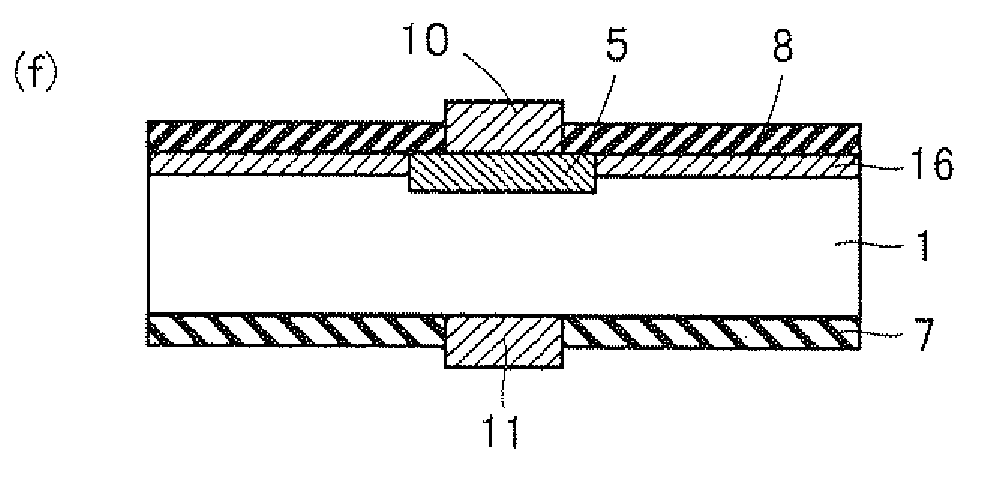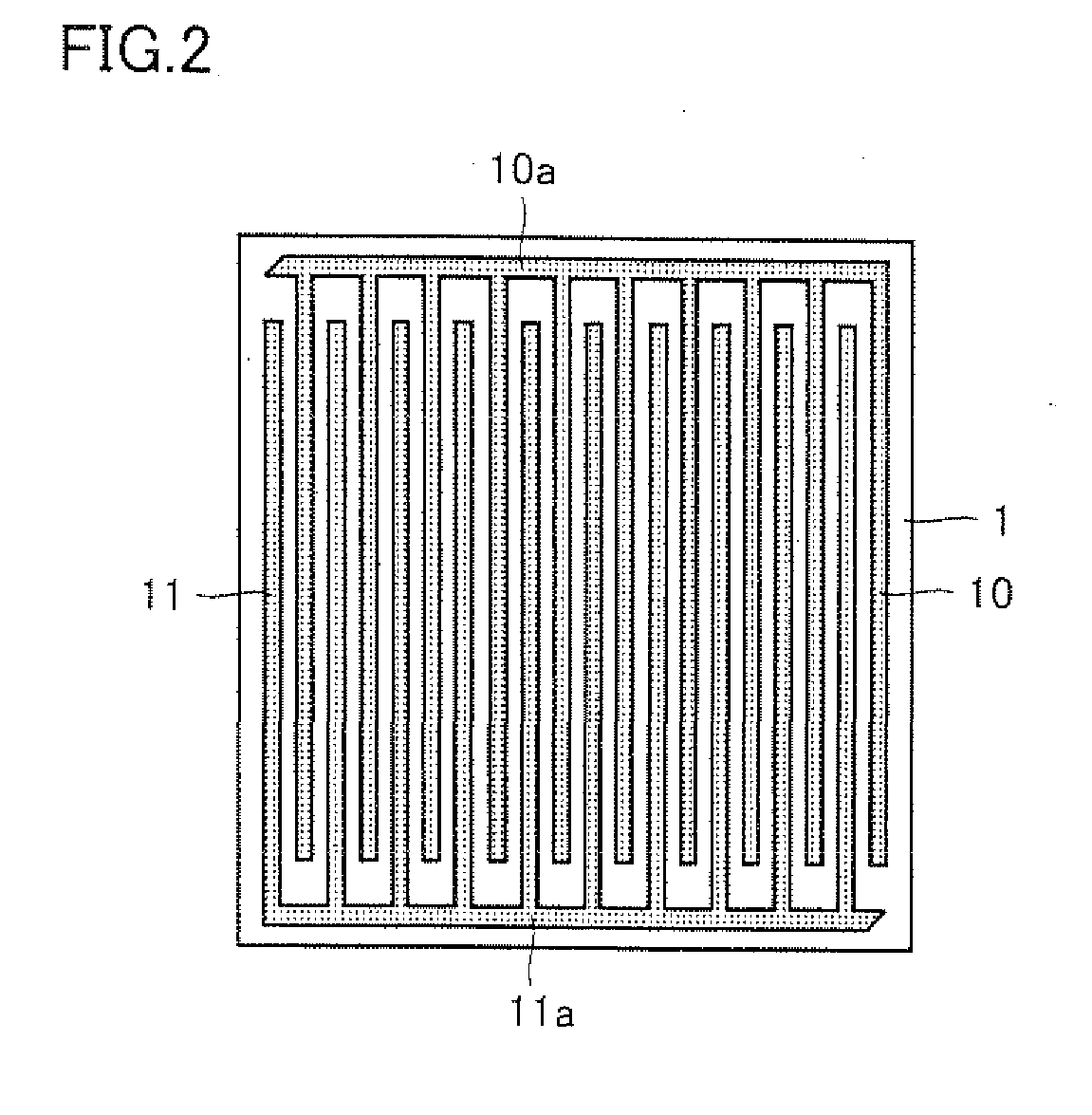Method of fabricating semiconductor device
- Summary
- Abstract
- Description
- Claims
- Application Information
AI Technical Summary
Benefits of technology
Problems solved by technology
Method used
Image
Examples
first embodiment
[0039]Referring to the schematic sectional views of FIG. 1(a) to FIG. 1(j), an example of a method of fabricating a solar cell which is an example of a semiconductor device according to the present invention will now be described.
[0040]First, as shown in FIG. 1(a), a semiconductor substrate 1 with a textured structure 8 made of, for example, pyramid-like irregularities or the like formed thereon is prepared. Herein, semiconductor substrate 1 is not particularly limited only if it is a substrate made of semiconductor. For example, a silicon substrate obtained by slicing a silicon ingot can be used. Moreover, semiconductor substrate 1 may be of n-conductivity type or p-conductivity type.
[0041]When using a silicon substrate as semiconductor substrate 1, a silicon substrate from which slice damage produced by slicing of a silicon ingot has been removed may be used, for example. It is noted that above-described removal of slice damage can be performed by etching the surface of the silico...
second embodiment
[0110]The present embodiment features applying first-conductivity-type-dopant diffusing agent 3 at an opening formed between diffusion preventing masks 2 disposed on the back surface of semiconductor substrate 1 and second-conductivity-type-dopant diffusing agent 4 at another opening formed with diffusion preventing mask 2 disposed at the back surface of semiconductor substrate 1, respectively, and then heat-treating semiconductor substrate 1, thereby simultaneously forming high-concentration first-conductivity-type-dopant diffusion layer 5, low-concentration first-conductivity-type-dopant diffusion layer 16, high-concentration second-conductivity-type-dopant diffusion layer 6, and low-concentration second-conductivity-type-dopant diffusion layer 17. The remaining points are similar to those of the first embodiment.
[0111]Referring to the schematic sectional views of FIG. 5(a) to FIG. 5(h), a method of fabricating a solar cell according to the present embodiment will now be described...
third embodiment
[0126]The present embodiment features fabricating a bifacial solar cell having electrodes at a light-receiving surface and a back surface of a semiconductor substrate, respectively, rather than a back electrode type solar cell.
[0127]Referring to the schematic sectional views of FIG. 6(a) to FIG. 6(f), the method of fabricating a solar cell according to the present embodiment will now be described.
[0128]First, as shown in FIG. 6 (a), semiconductor substrate 1 of the second conductivity type with a textured structure (not shown) made of, for example, pyramid-like irregularities or the like formed thereon is prepared.
[0129]Then, as shown in FIG. 6(b), a first-conductivity-type-dopant diffusing agent 3a containing a first-conductivity-type dopant is applied to the light-receiving surface of semiconductor substrate 1 which is the surface at the side where the textured structure is formed, and heat treatment is performed, thereby diffusing the first-conductivity-type dopant from first-con...
PUM
 Login to View More
Login to View More Abstract
Description
Claims
Application Information
 Login to View More
Login to View More - R&D
- Intellectual Property
- Life Sciences
- Materials
- Tech Scout
- Unparalleled Data Quality
- Higher Quality Content
- 60% Fewer Hallucinations
Browse by: Latest US Patents, China's latest patents, Technical Efficacy Thesaurus, Application Domain, Technology Topic, Popular Technical Reports.
© 2025 PatSnap. All rights reserved.Legal|Privacy policy|Modern Slavery Act Transparency Statement|Sitemap|About US| Contact US: help@patsnap.com



